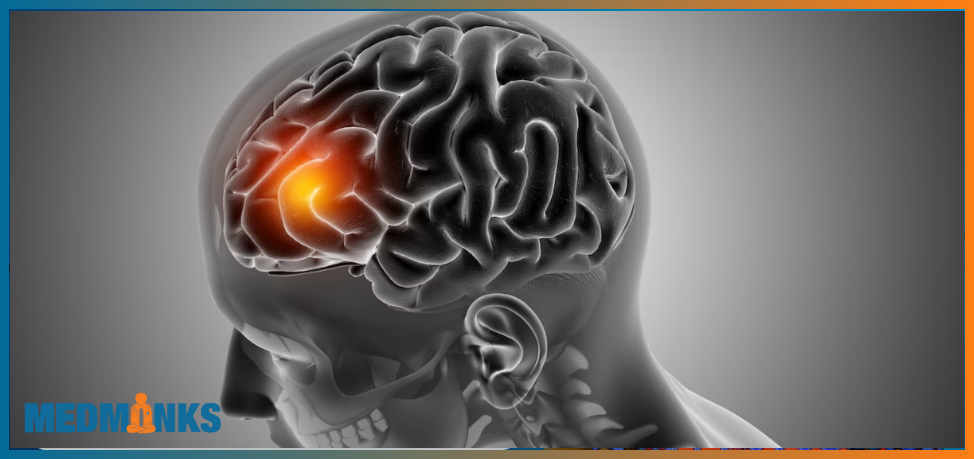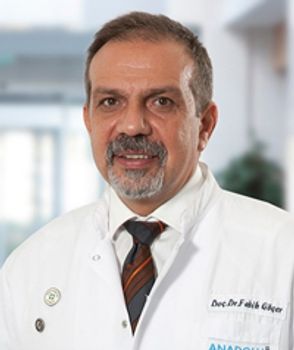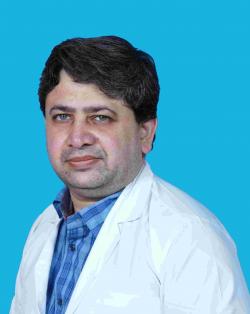4 Successful Ways To Treat Brain Tumors

This blog rounds about every important aspect of brain tumor that needs to be informed of, especially its treatment. Brain tumor is the mass of abnormal cells that multiply inside the skull, which can be life threatening as it can cause brain damage.
Types of Brain Tumors:-
1. Primary brain tumor- It forms inside the brain and develops from the following when they lose their normal functioning, such as:-
• Brain cells
• Nerve cells
• Glands
It can be benign or cancerous in nature. There are various types of primary brain tumors based on their occurrence in the types of tissues. They are as follows:
a. Gliomas- This is the most common of all brain tumors which begins in glial tissues. This further has many types:
- Astrocytomas: They originates from astromycetes cells and may grow anywhere in the brain and spinal cord. In adults, they occur in cerebrum most often. In children, they arise in the cerebrum, cerebellum and the brain stem.
- Oligodendrogliomas: They occurs in the myelin producing cells. These usually arise in the cerebrum. They grow with a slow pace and usually do not proliferate into the surrounding brain tissues.
- Ependymomas: Generally enlarge in the lining of ventricles, they may also arise in the spinal cord. It is found most common in adolescence.
b. Meningiomas: They arise from the meninges and are usually benign in nature. It is found mostly in women between 30-50 years of age.
c. Schwannomas:These benign tumors originates from Schwann cells, which produce myelin that protects peripheral nerves.They affect mainly adults. These tumors shows up in women twice as often as men.
d. Craniopharyngiomas: They develop in the area of pituitary gland near the hypothalamus. Usually benign in nature, these tumors can sometimes be malignant. These generally affect children and adolescents.
e. Germ cell tumors:These develops from primitive sex cells or germ cells.The most common type of germ cell tumor in the brain is germinoma.
f. Pineal region tumors: These develop in or around the pineal gland. The tumor can proliferate actively (pineoblastoma) or slowly (pineocytoma). These tumors cannot be removed in general due to its difficult reach.
2. Secondary brain tumor- It majorly turns into brain cancers due to its malignant nature. They start in one part of the body and spread to the brain. The most common cancers that spread to the brain are breast, lung and kidney cancers.
What is the Age of Onset?
Brain tumors are commonly observed in children and older adults although it can be developed in the people at any age.
What Are the Symptoms?
Patient experiencing any of the following can be alarming:-
- Speech difficulties
- Hearing problems
- Blurred vision
- Altered mental status
- Seizures
- Clumsiness or balance disorder
- Abnormal sensation
- Severe headaches, especially in the morning with nausea
- Dizziness
- Weakness in particular part of the body
Brain Tumor Diagnose
The first step to diagnose brain tumor is physical examination. The physical examination includes a detailed neurological examination, that is, they’ll check whether the cranial nerves are intact or not.
The doctors may check on: -
- Memory
- Coordination
- Muscle strength
- Mathematics calculation
After this initial examination, the doctor may suggest the following tests.
- MRI of the head – this is conducted with a special dye to detect tumors.
- CT scan - This is done to obtain a detailed scan of the body that couldn’t be achieved with an X-Ray.
- Angiography - This is the most useful procedure during surgery as a dye is injected into the artery that travels in brain allowing doctors to take a look at the blood supplies of the tumors.
- Biopsy - Here a piece of tumor is taken out for examination. The biopsy then identifies whether the tumor cells are benign or malignant. It also finds out whether the cancer origination is in the brain or any other part of the body.
TREATMENT
The Treatment depends on the following factors:-
- The overall patient’s health
- Patient’s age
- Location of the tumor
- Tumor size
- Type of tumor
- Possible side- effects
Considering the nature of brain tumors, the treatment varies. They are as follows :-
1. Surgery: - It involves removal of tumor from the heathy tissues while operating. It also aids the improvement of neurological symptoms and provide tissue for diagnosis.Here a neurosurgeon while operating,removes a part of the skull which is called craniotomy.In recent times some advances have been made to the brain tumor surgery which includes cortical mapping, enhanced imaging and fluorescent dyes.In some case surgeries are inoperable as the tumor is located near a vital structure. In such cases doctor recommends other treatment options such as biopsy or removal of a portion of the tumor.
2. Radiation therapy: - It employs high X-Rays or other particles to kill tumor cells. It is done in order to cease the growth of brain tumor. It is generally conducted after surgery and possibly along with chemotherapy.On the basis of application, it is of two types:-
a. Internal radiation therapy: - It is done by placingradioactive implants close to the tumor site or may be inserted into it.
b. External beam radiation therapy: - It is done from a machine outside the body. It is a painless procedure where patients don’t even feel it and can carry out their routine activities.Types:-
• 3D-CRT: - here, the images from CRT and MRI scans are used for creating a 3D models of the tumor. This model is then used to target the tumor with radiation beams.
• Intensity modulated radiation therapy (IMRT): - This is a more intense version of 3D-CRT where more intense beams are thrown at tumors while giving less to the surrounding healthy tissues.
• Proton therapy: - It employs high energy proton, rather than X-Rays to destroy tumor cells. It is done when less radiation is required.
• Stereotactic radiosurgery (SRS): - It involves the usage of single high dose of radiation directly to the tumor and not the healthy tissues. It’s best used for tumor that is only in one area of the brain.
There are many different types of SRS equipment:-modified linear accelerator, gamma knife, cyber knife.
• Fractionated stereotactic radiation therapy: - It is done with precision as in SRS. The only differing point here is the dose which is given in fractions for over several weeks. This therapy is used for tumors located close to the vital structures such as optic nerves or brain stem.
The doctor chooses any of the above radiation techniques depending upon the location and size of the tumor. But in certain cases, a combination of multiple techniques works the best.
3. Systemic therapy: - It uses medication, given through the blood stream to reach the tumor cells, to destroy them.Systematic therapies are given through a tube placed into a vein using a needle or in a pill or capsule (orally). It has following types: -
a. Chemotherapy: - it keeps the tumor cells from growing, dividing and making more cells by using drugs.
b. Targeted therapy:-it runs parallel to chemotherapy. In addition, it targets the tumors specific genes, proteins or the tissue environment that results in tumors’ growth and survival.
4. Alternating electric field therapy: - This treatment involves a non- invasive portable device that interferes with the parts of a cell that are required for tumor cells to grow and spread.
It is done by setting electrodes that produce an electric field on the outside of a person’s head. This treatment is a highly recommended option for glioblastoma nowadays for its impressive results.
Can Brian Tumor Be Cured?
Brain tumor can be cured if it is completely removed through surgery at Grade I as they are non-cancerous and slow at spreading. At Grade III,tumor may reappear even after its treatment. And it is usually non- curable at Grade IV because of its high abnormality and proliferation.
FOLLOW UP CARE
Here are a few things that can help a cancer survivor to lead a better life post-treatment:
- Follow medication as prescribed by the doctor.
- Beware of recurring symptoms if treated for cancer at grade III and IV.
- Follow up checkups with the doctor shouldn’t be unattended.
- Be as physically active as possible.
- Switch to healthy eating habits.
- Stay positive and closed to your loved ones to fight depression.
How Much Does This Treatment Cost?
The medical treatment fluctuates on a case-to-case premise. The treatmentoption required for the patient changes depending upon the size, type, organize, and the area of the tumor. By and large, brain tumor treatment cost in India is 5000 – 8000 USD. The price differs between different cities. Some other factors that will change brain tumor operation cost in India are the sort of operation, the type of hospital room, the number of days spent in ICU, the diagnostic procedures and the insurance cover.
Top 2 Brain Tumor Specializing Hospitals And Services In India
1. Max Super Specialty Hospital, Saket, Delhi
• Max Super Specialty Hospital, Saket is a multi-specialty hospital accredited by NABH and NABL.
• For providing excellent healthcare services, the hospital has been awarded with Express Healthcare Award.
• They have also been celebrated as the first global green Hospital for installing a Green OT. (Accreditation)
Dr Bipin S Walia (MBBS MS M.Ch. - Neurosurgery,25 Years of Experience)
• He is one of the best neurosurgeons in India.
• His specialization is in performing image-guided surgery, disc replacement, brain tumor surgery, endoscopic disc surgery and minimally invasive surgeries operated for treating spinal tumors.
• He actively attends multiple organizations that keep him stay dynamic with the changing technologies. He got trained in advanced neurosurgery techniques from St. Vincent’s Hospital, Sydney.
2. Fortis Memorial Research Institute (FMRI), Delhi-NCR
• Fortis Memorial Research Institute has one of the most profound medical experts working under them, which has helped in making them one of the best hospital in India.
• It offers pain management via Robotic Interventional care.
• FMRI a part of Fortis Group, is also known as the Mecca of Healthcare in the Asian Pacific region.
Dr Rana Patir (MBBS MS M.Ch. - Neurosurgery, 27 Years of Experience)
• Dr Rana Patir has conducted more than 10,000 neurosurgeries in his 27-year long career.
• He has expertise in performing Minimal Invasive spine and brain Surgery, Neurovascular Surgery, Skull Base Surgery, Extra Cranial-Intracranial Bypass Surgery, Epilepsy Surgery and Pediatric Neurosurgery.
• He has successfully performed some of the most complicated brain tumor surgeries.





